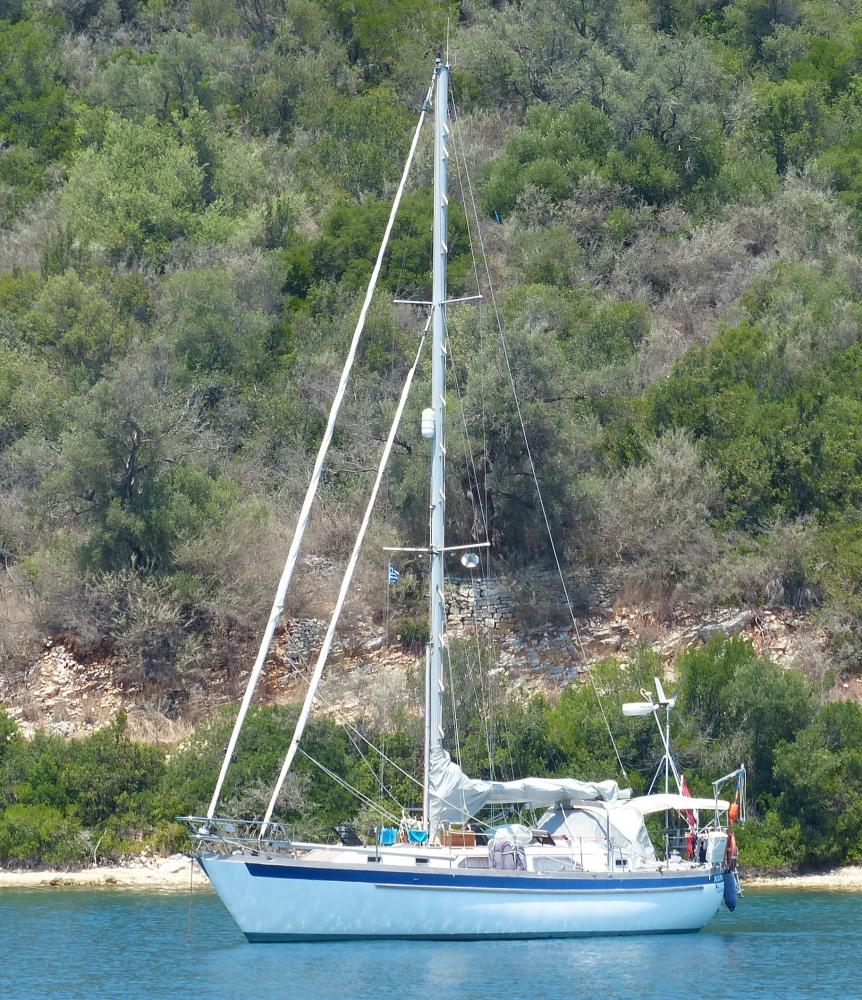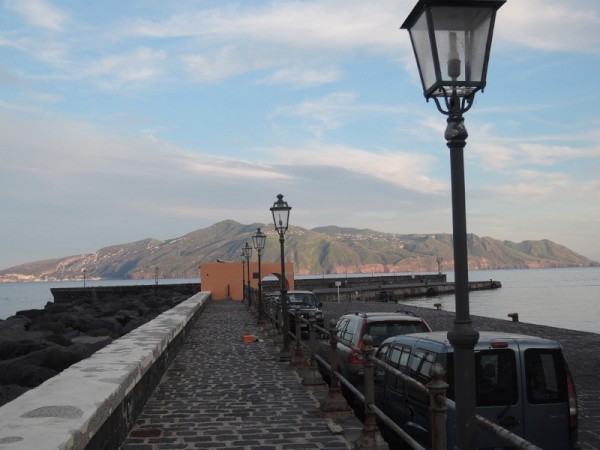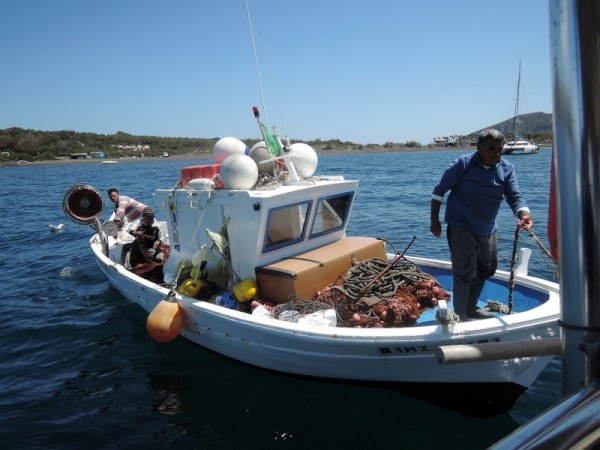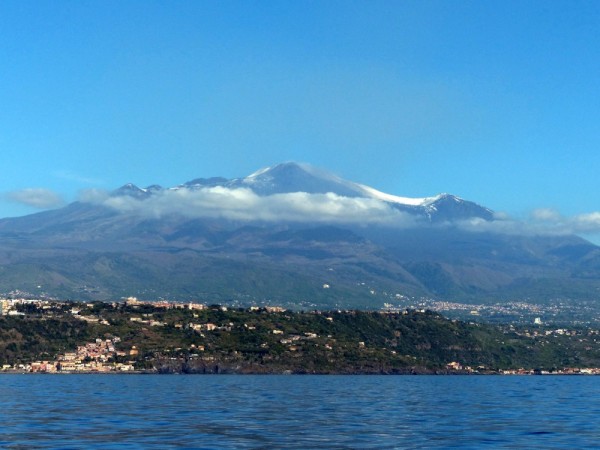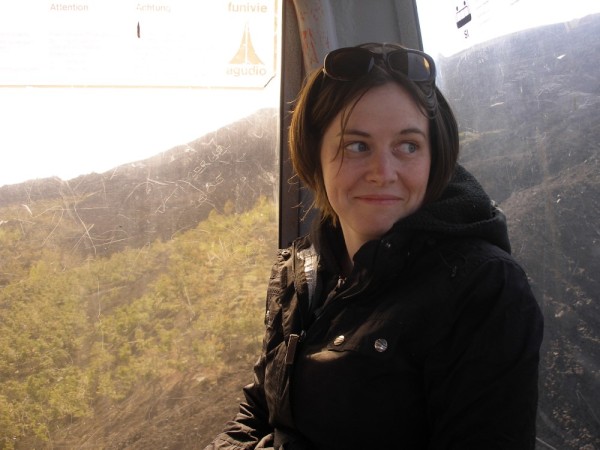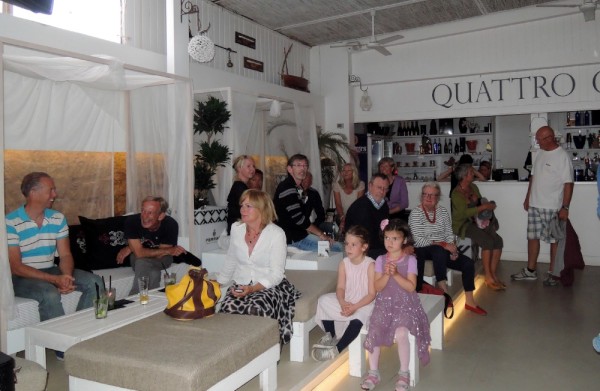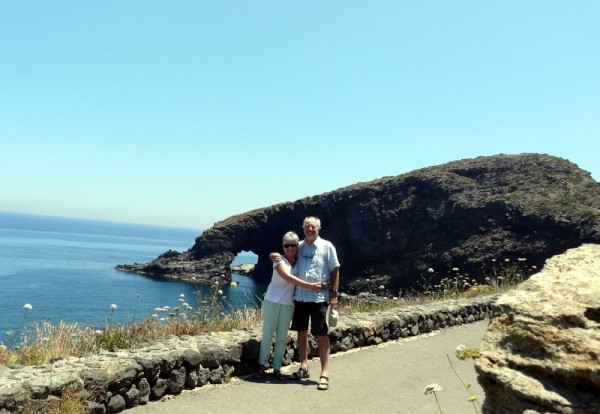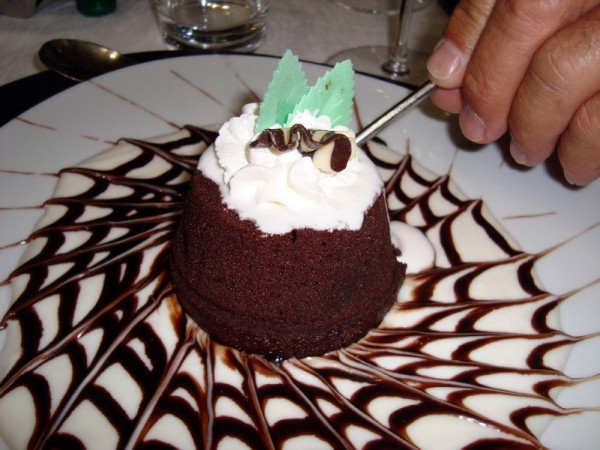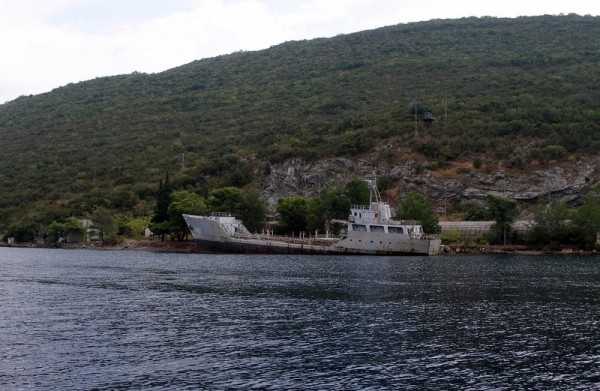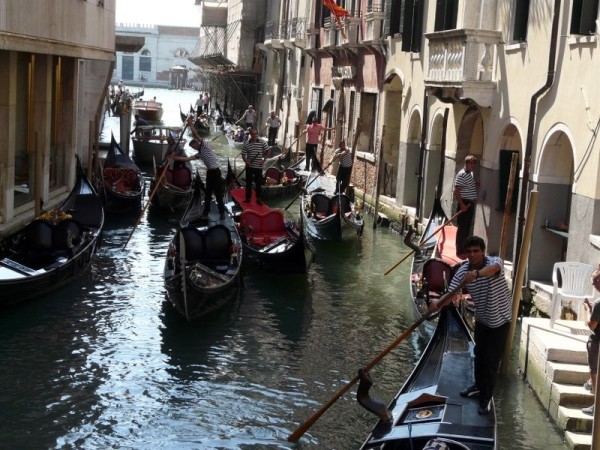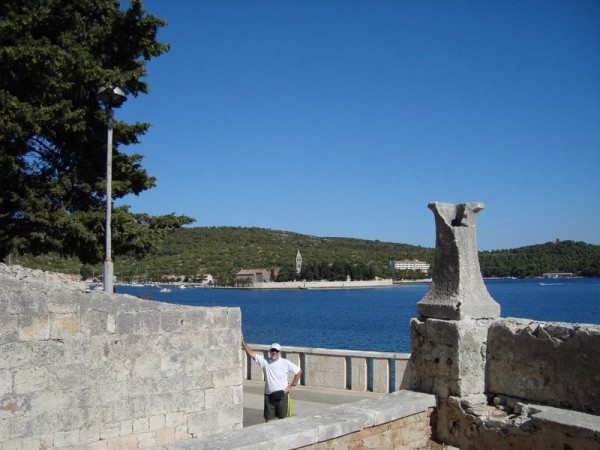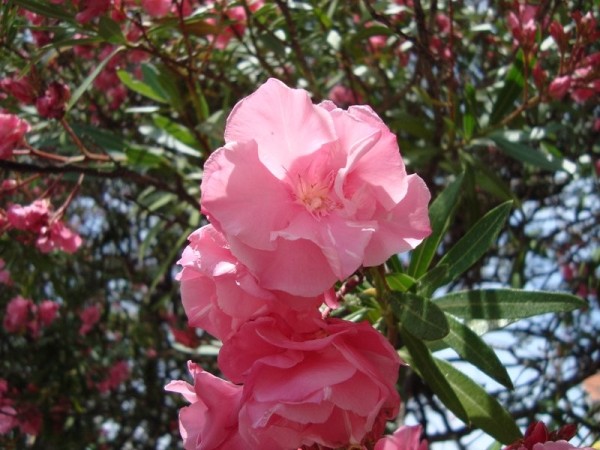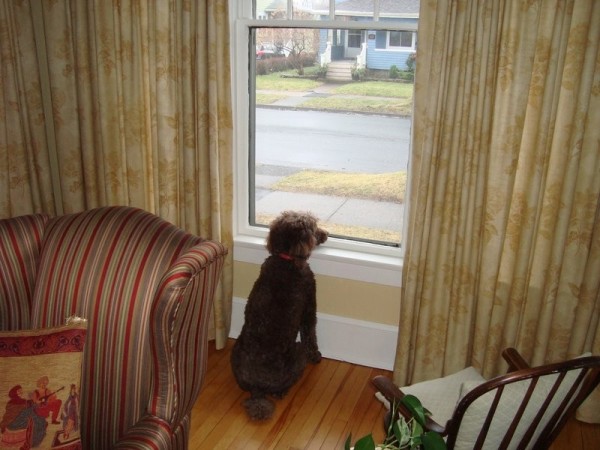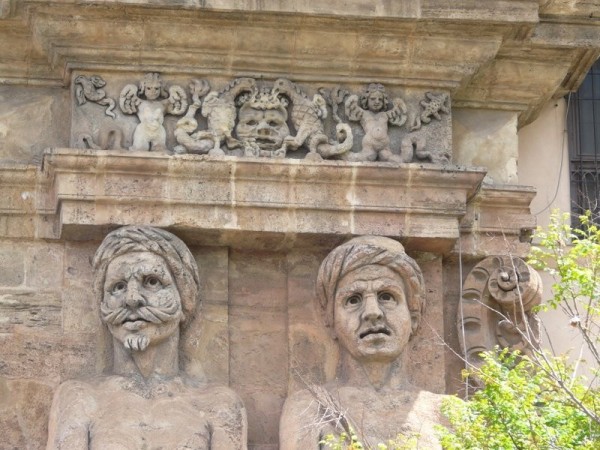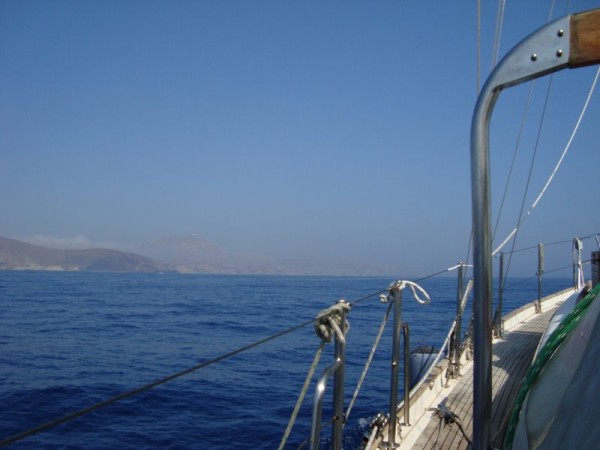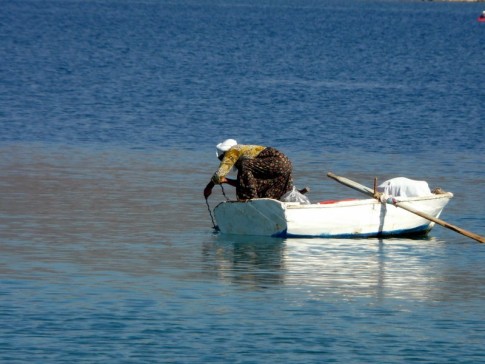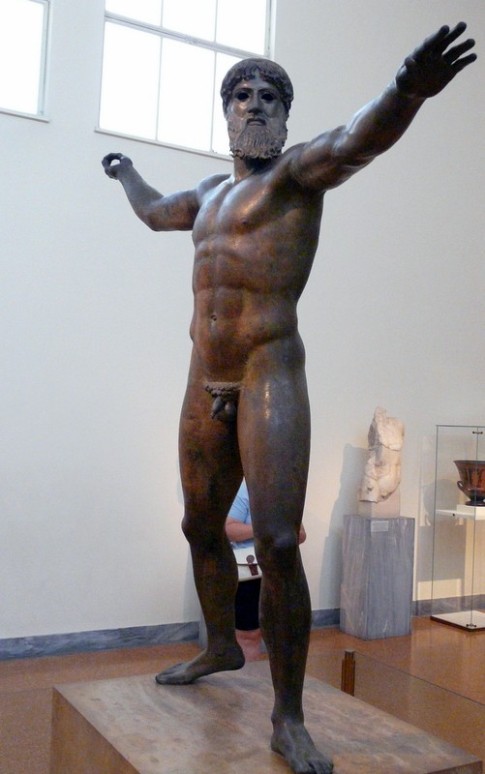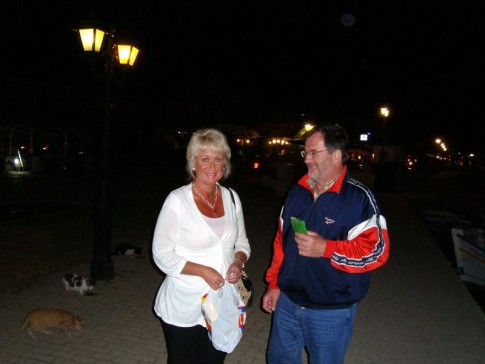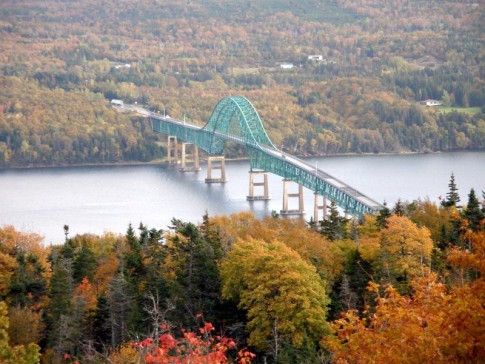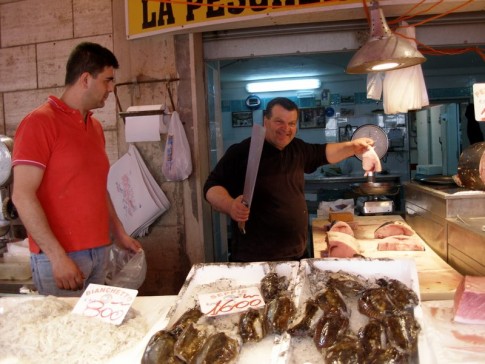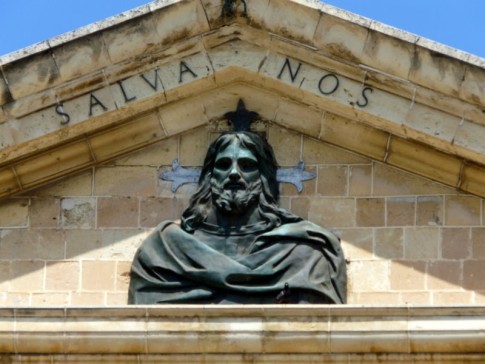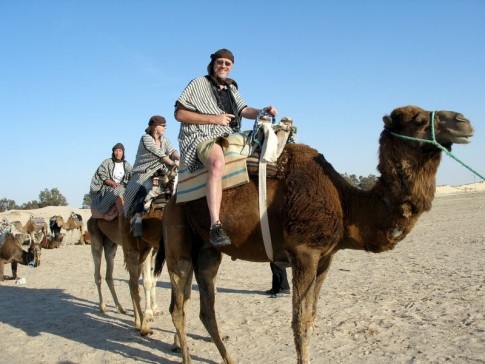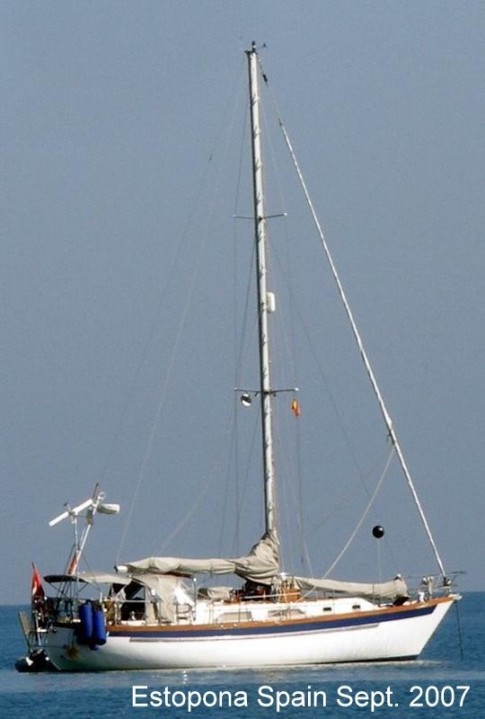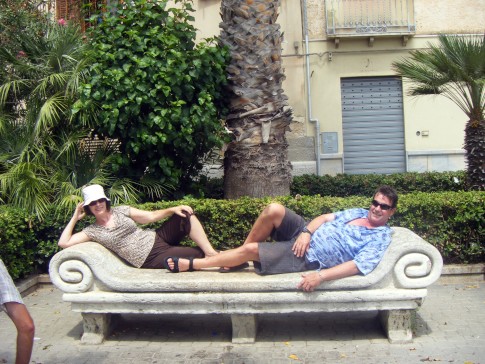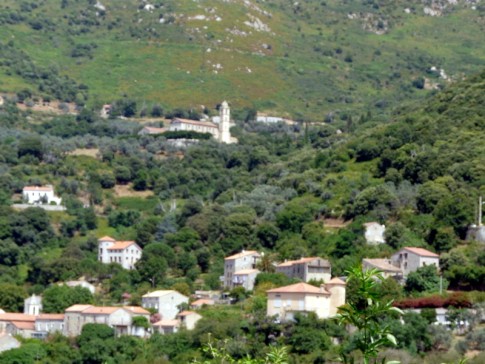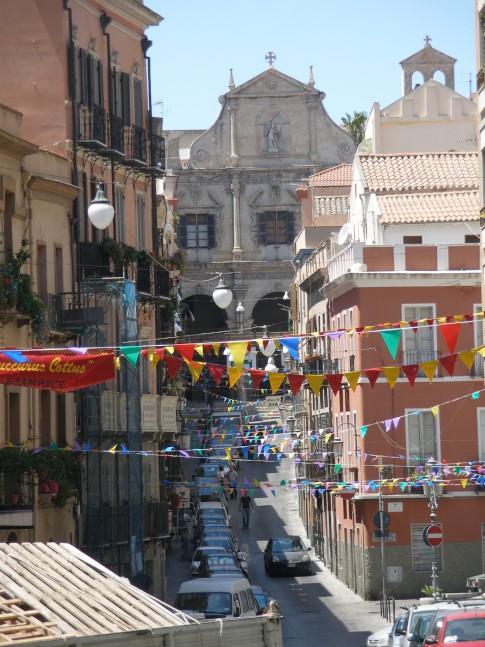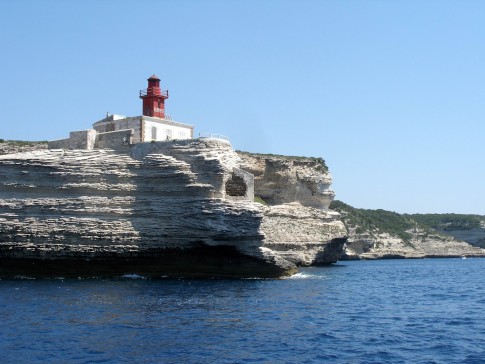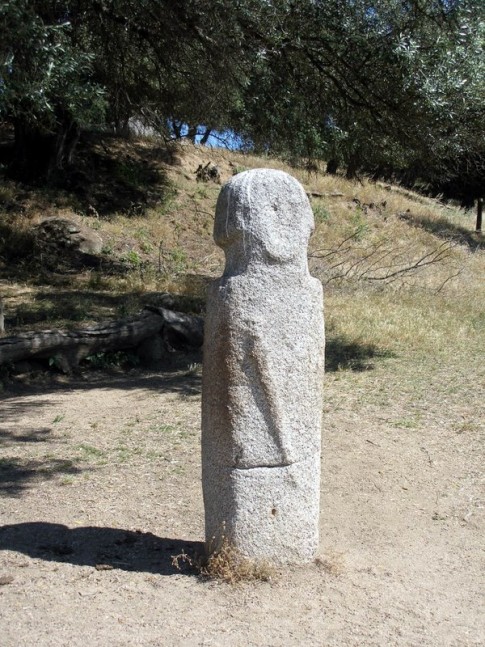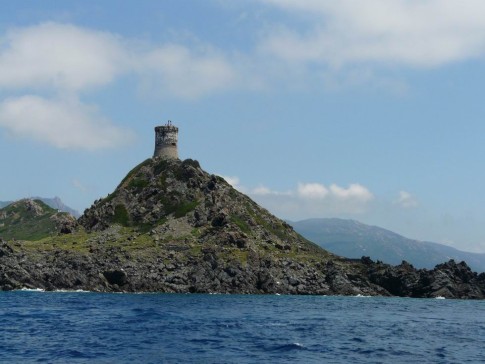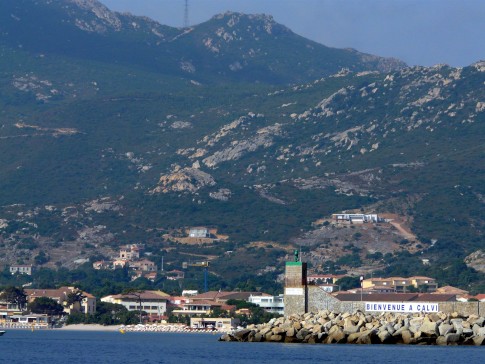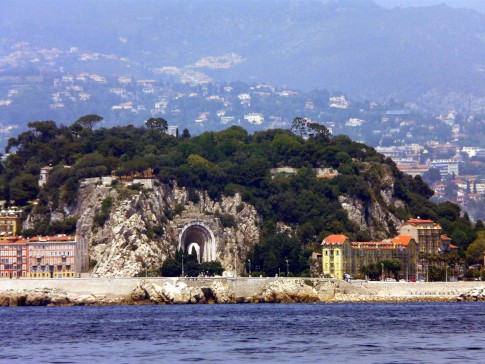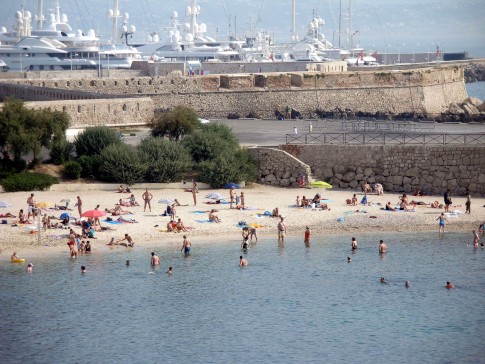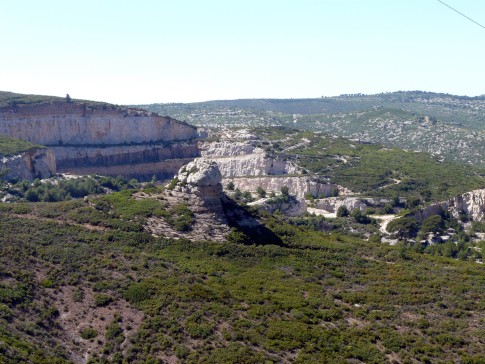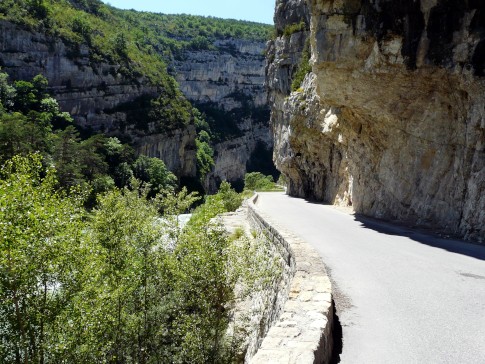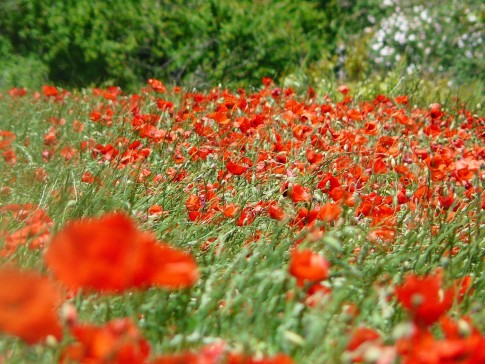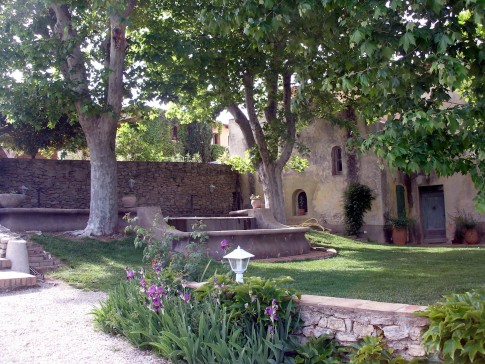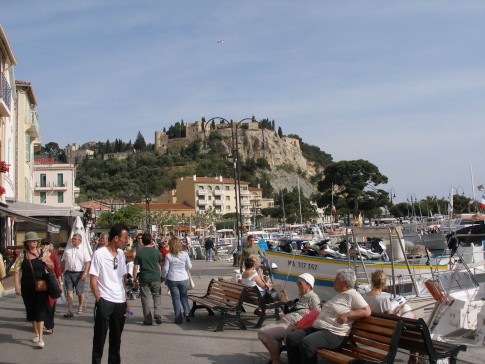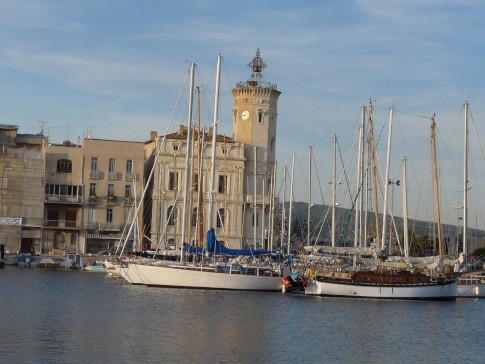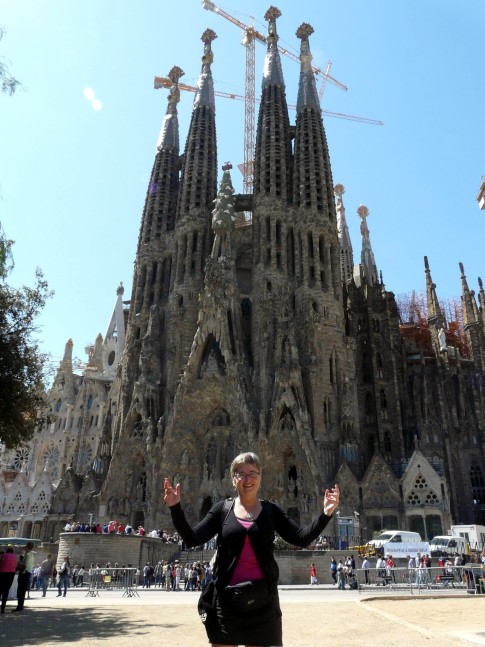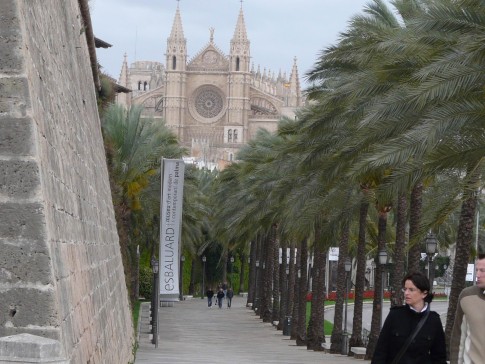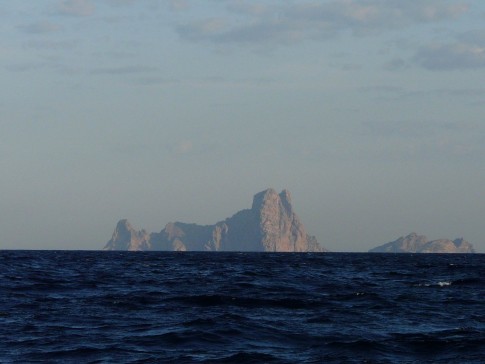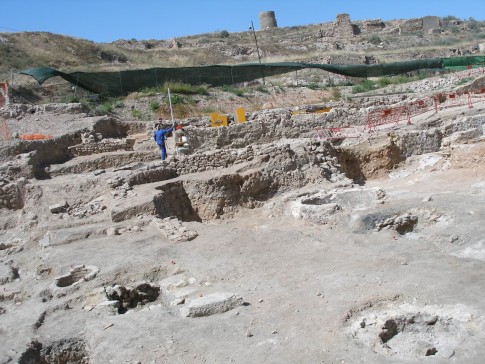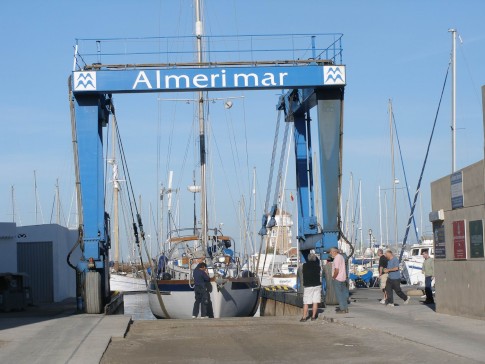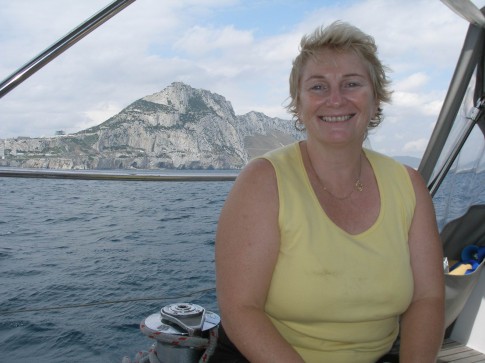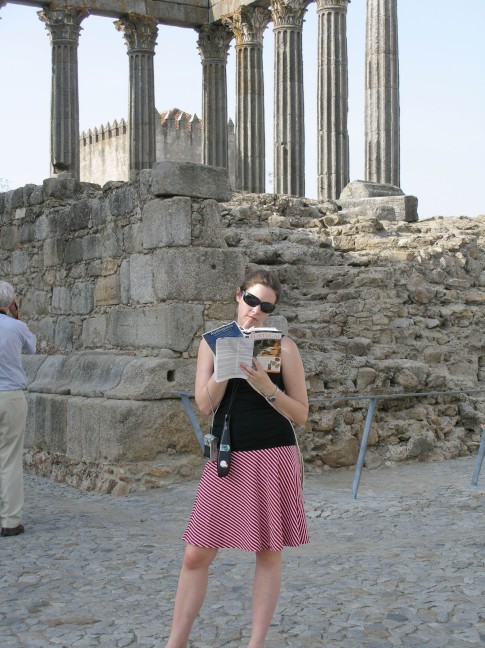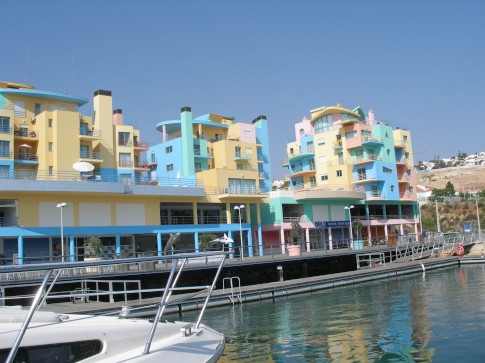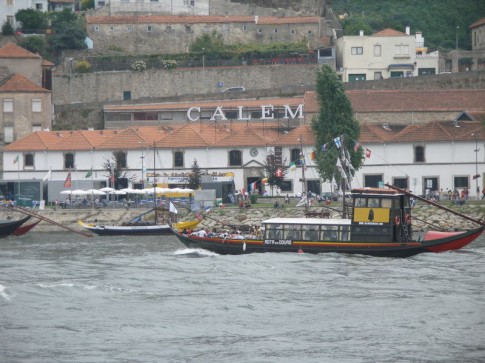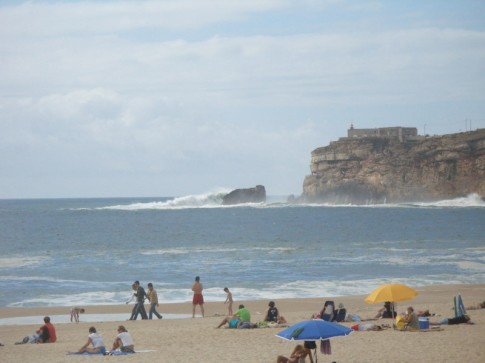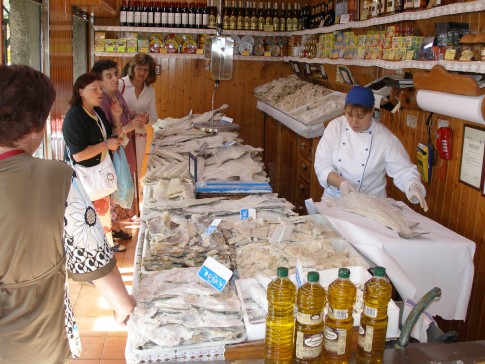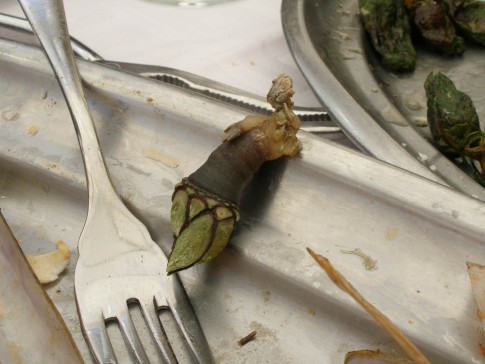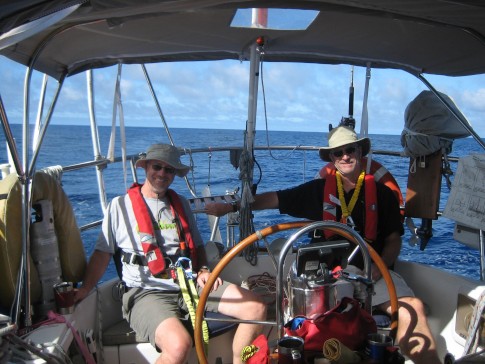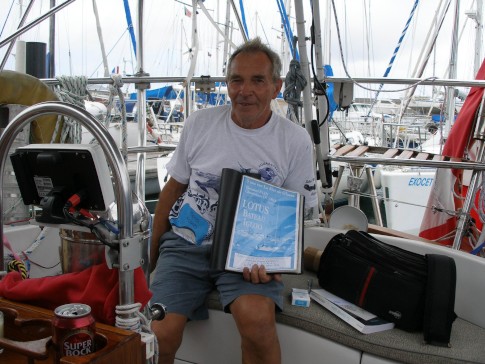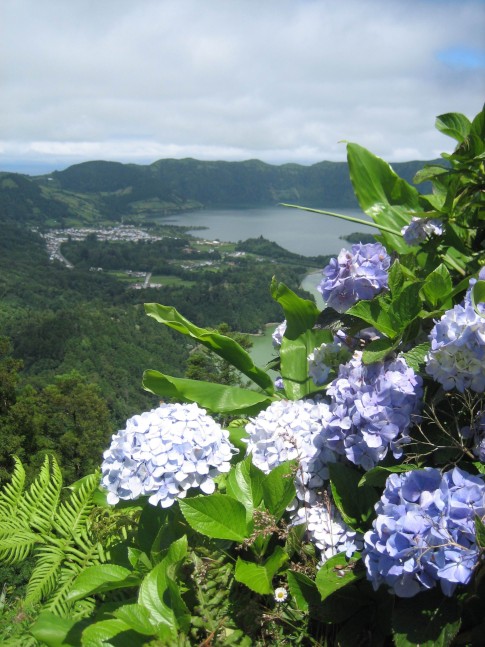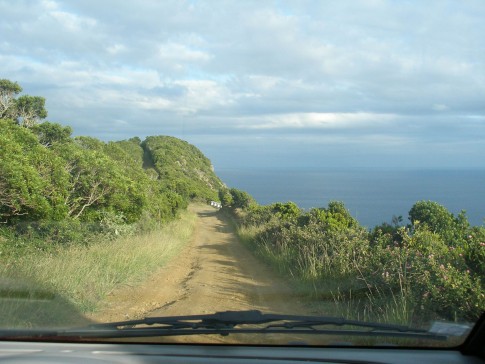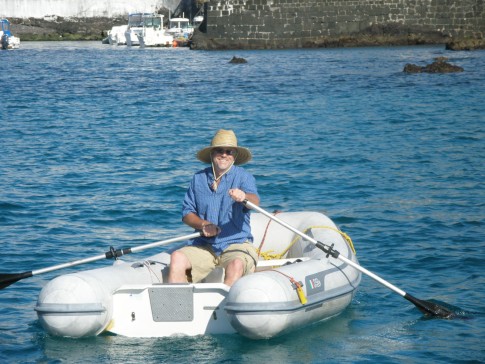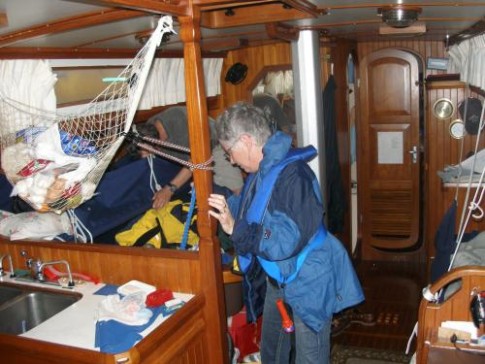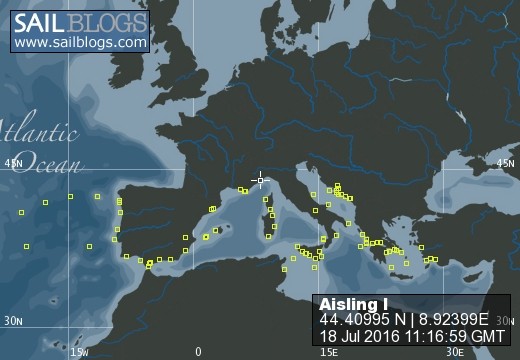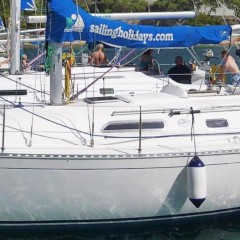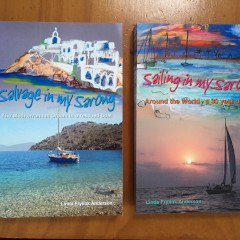
Aisling I
18 July 2016 | Genoa
11 July 2016 | Genoa Italy
04 July 2016 | Genoa
02 July 2016 | Genoa
25 June 2016 | Porto Azzurro Elba
11 April 2016 | Marina di Ragusa
21 March 2016 | Halifax
01 March 2016
14 January 2016
30 September 2015
25 September 2015 | Crotone Italy
18 September 2015 | Erikoussa
10 September 2015 | Preveza
10 September 2015 | Preveza
24 July 2015 | Preveza
20 July 2015 | Varko Bay
13 July 2015 | Vlicho Bay
09 July 2015
03 July 2015 | Preveza Greece
21 June 2015
Road Trip! Mycenae to Mystras
10 August 2011
Bonnie and Rick
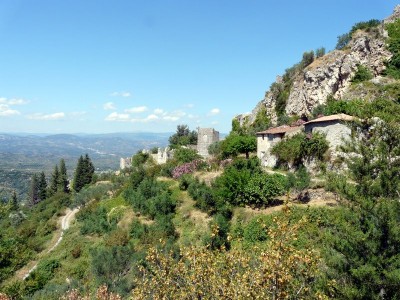
Phase two of our Peloponnesian road trip will take us further afield, so a bit of work is required to prepare Aisling for an unattended night at anchor. By 9 a.m. the hatches are closed, the garbage is emptied, the propane and pressure water are turned off and the LED anchor light is turned on. The fridge is cooled to the lowest possible temperature and pillows are stacked over the fridge doors in a futile attempt to keep the 35 degree heat out. Our milk may go sour, but at least we are confident that the anchor is solidly set with a 6:1 scope. Leaving the dinghy at the dock is one of our biggest worries. Although theft is of little concern here, the unfortunate fact is that our dingy is only insured if it is locked up. This is problematic in fishing villages like Kilada, because it is hard for us to know if we have left it a convenient spot or not. There are lots of people around, but no one to ask. The second concern is the wash from boats coming and going, which will create wear and tear on our new dinghy cover. Rick fusses with fenders and lines, snaps on the lock, and we drive away with fingers crossed.
We make a quick stop at a small bakery, where I chose a wheel of olive flatbread and a large phyllo pasty stuffed with cheese. The olive bread goes into the back seat to be saved for lunch, but we can't resist gobbling up the phyllo, which is so fresh that the cheese is warm and runny. We are still wiping grease from our faces and fingers when we arrive at Mycenae, the legendary home of Agamemnon. (Watch for my future blog post on the topic of "How to Gain Five Pounds in One Month".)
How I wish my father could be here to visit Mycenae with us! I was perhaps eight years old when he first told me the story of Helen of Troy, "the face that launched a thousand ships". Helen was the wife of Agamemnon's brother, King Menelaus of Sparta. If you've read the Iliad, and even if you haven't, you probably know that Helen's elopement with Paris of Troy started the Trojan war. Agamemnon defended his brother's honour to the end, but the story of this dysfunctional family makes the British royal family look like regular folks. Seeking wind to blow his ships to Troy, Agamemnon attempted to sacrifice his daughter Iphigenia to the gods. Even though Iphigenia was (maybe) saved at the last minute by the goddess Artemis, Agamemnon's wife Clytemnestra thought that attempting to sacrifice their daughter had been a really bad idea. In fact, she got so ticked off that she killed him. In his bathtub. Then her children Orestes and Electra got pretty upset with Clytemnestra for killing their Dad, so they killed her. And her lover Aegisthus. As you might expect, there are a lot of graves at Mycenae.
The archeological site at Mycenae actually pre-dates Agamemnon's era, and was inhabited as far back as Neolithic times. Mycenae was once the mightiest power in the Mediterranean, with an advanced culture, a trading network that ranged from Egypt to the Baltic, and a syllabic script known as "Linear B". The reasons for Mycenae's demise circa 1100 BC remain mysterious, although earthquakes and an invasion of the "Sea People" are high on the list of theories. The site at Mycenae was first excavated by a Greek team in 1841, but it was the amateur archeologist Heinrich Schliemann who made the most significant finds, discovering the shaft graves and the golden mask that he believed was the death mask of King Agamemnon. Unfortunately, Schliemann seemingly ascribed to the old adage "never let the facts get in the way of a good story", and experts have established that the mask actually dates to a period some 200 years before Agamemnon ruled. In spite of this knowledge, the mask is still commonly known as the "Mask of Agamemnon". We saw the mask when we visited the National Archeological Museum in Athens two years ago. Schliemann must have been quite taken with it, because he named his son Agamemnon.
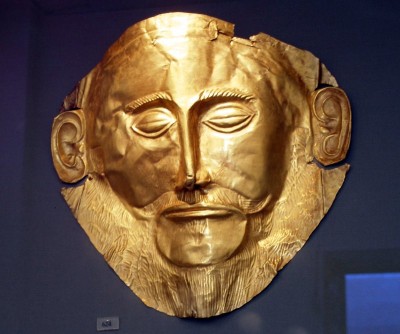
Even though the most precious treasures from Mycenae have been moved to Athens, some of the artifacts displayed in the small on-site museum are older-than-old. Looking at the everyday utensils of people who lived milennia ago always gives me an unpleasant realization of my own mortality, and I have a hard time getting my head around the dates displayed on the exhibits. The basin in this picture, for example, was already roughly 3,000 years old when Christ was born.
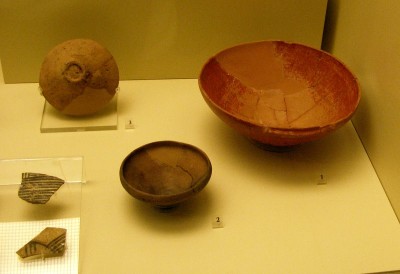
The items in this display are newer (circa 1400 BC).
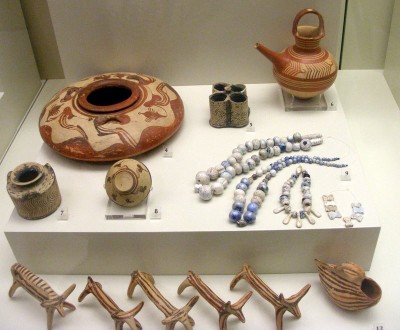
From the museum, we head up the hill to the famous "Lion Gate". Although there aren't many tourists around, a group from a small cruise ship arrives just as we do, foiling our attempts to get a perfect picture at the gate. On the other hand, their tour guide is very knowledgeable, so we hover for a while.
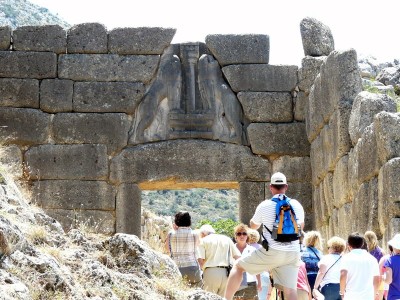
The cruise ship passengers are a young group, but they are huffing and puffing on the climb to the peak of the acropolis. One of them is literally pushed up the hill by her friends. The view from the top is the reward for the effort.
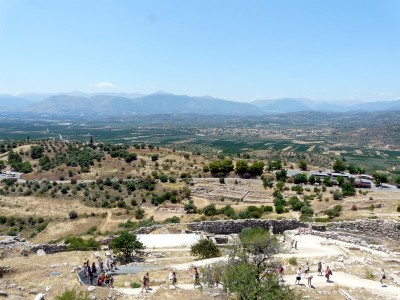
Much of the acropolis at Mycenae dates to 12th-13th centuries BC. The style of the construction is known as "Cyclopean", because the building stones were so large that the ancient Greeks thought they could only have been put in place by Cyclopes (one-eyed mythical giants). These large building stones are the single biggest evidence of their engineering skills and abilities. The wall leading to the Lions Gate is constructed of huge (8'x8' x?') stones that are fit together more tightly than you can imagine. How they managed this construction in 1200 BC boggles the mind!
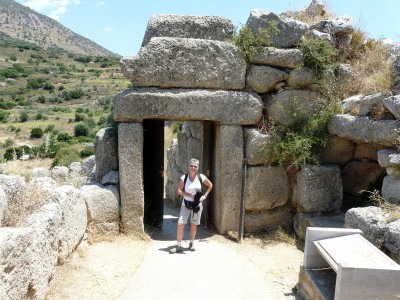
Back at the bottom, we see Grave Circle B and I suddenly realize that I have not seen Grave Circle A. Grave Circles A and B are the famous grave sites where Schliemann found some of the incredible treasures that we saw when we visited the Museum of Archeology in Athens. "You did see Grave Circle A" says Rick, "it's just past the Lion Gate". "But I didn't know what it was when I was looking at it! I have to go back" I say, and head back up the hill and through the Lion Gate again. Rick was right, I had looked at it before, but it feels different to look at it with an understanding of the significance.
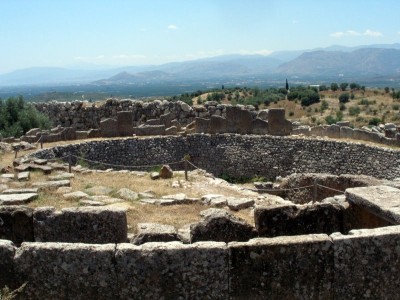
When I return, Rick has discovered one of the tholus tombs, and it's pretty amazing.
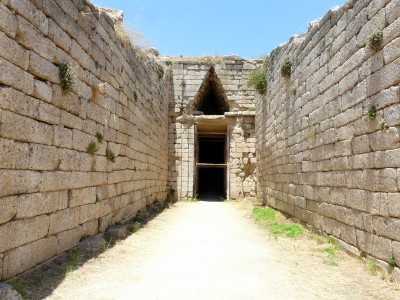
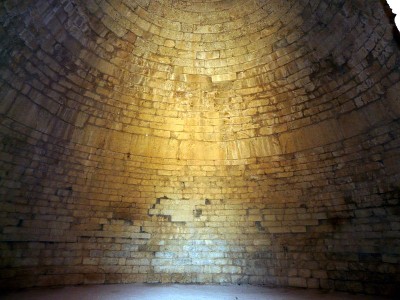
We almost bypass the "Treasury of Atreus", another tholus located outside the main site. This tomb was raided in ancient times, but is the best preserved.
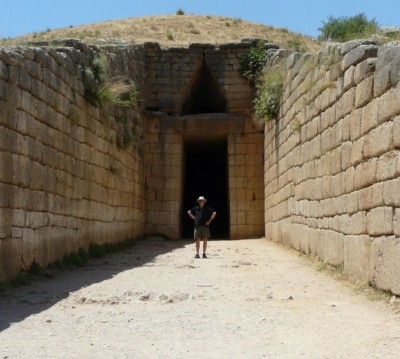
We get back on the road, unpack our lunch and head toward Sparta, passing Tripoli (Tripolitsa), which at one time was the Ottoman's administrative centre in the Peloponnese. If you need proof that war brings out the worst in mankind, consider that in 1821, in the early days of the Greek war of Independence, thousands of Turkish Muslims and Jews were massacred here by Greek forces, perhaps in retaliation for an Ottoman massacre of Greeks that had occurred months earlier. On a more pleasant historical note, Tripoli is also the hometown of our elderly Greek neighbours, Louis and Martha. But we don't drive in to the town, and instead continue on toward Sparti (Sparta). We are now in Laconia, one of the most prolific olive-growing regions in the Mediterranean. Coincidentally, the olive oil we often buy at Costco is from Laconia. Wild and cultivated olive trees are everywhere, and the majestic Taygetus mountain range is before us.
We drive through Sparta and on to Mystras, a picturesque Byzantine fortress-town. After driving up the steep hill to the upper gate of the historic site, we discover that it is has closed for the afternoon. A beautiful young French traveller, dressed in a lacey white sundress, is disconsolate. "Ce n'est pas vrai!" she wails (Frenchspeak for "Say it isn't so!"). I can't help but think that the accident of arriving on a Sunday afternoon may have saved her life, since she had apparently intended to climb the steep, rocky paths precariously balanced on cork-soled espadrilles with four inch heels. Rick, on the other hand, thinks she looked great!
Now we have no choice but to stay overnight. We drive back down the hill and investigate the rooms at the only two hotels in the village. One is available for 40 euros and the larger hotel, the Byzantion, is 50 euros. After a little bargaining, we get the Byzantion hotel (with a back garden and swimming pool) for 40 euros. We are both happy! Our pleasure at the mountain view from our balcony is surpassed only by our delight at having an air conditioner, a large bathroom and unlimited water for showers. After an hour of pool time and long, luxurious showers, we feel rejuvenated.
We stroll through the streets of the village, admiring the beautiful gardens and attractive houses. There are many orange trees, and unclaimed oranges roll in the gutters. A middle- aged couple is tending their garden and arguing vigorously as they dig potatoes. We imagine what it might be like to renovate one of the abandoned houses and settle in for a while. Maybe we could plant grapes and make wine!
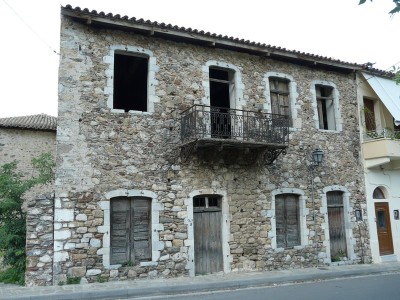
I want one of these vents for our chimney!
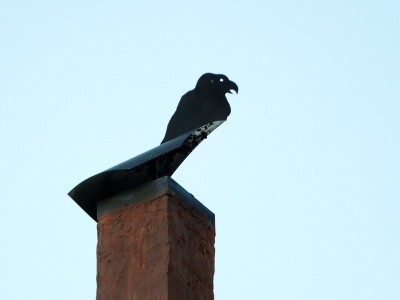
I spot a bush on the side of the road that I think might be a caper bush. "Capre?" I ask an elderly woman who is sitting in her doorway. "Neh, capari!" she nods and smiles, then offers me a few branches of fresh oregano from a bouquet and says "oregani!". We thank her, "efharisto!" and Rick snaps a photo.
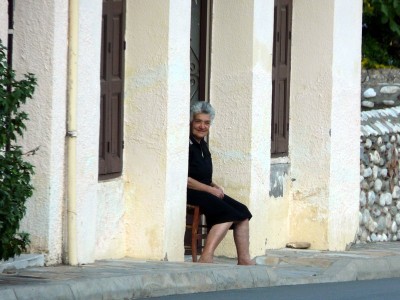
We have dinner in an open-air restaurant on the square (a delicious but greasy lamb shank with roasted potatoes for me, souvlaki for Rick) then we turn in early and sleep soundly until dawn, deliciously cool for the first night in over a month. Are road trips the best part of a sailing adventure? Maybe.
We make a quick stop at a small bakery, where I chose a wheel of olive flatbread and a large phyllo pasty stuffed with cheese. The olive bread goes into the back seat to be saved for lunch, but we can't resist gobbling up the phyllo, which is so fresh that the cheese is warm and runny. We are still wiping grease from our faces and fingers when we arrive at Mycenae, the legendary home of Agamemnon. (Watch for my future blog post on the topic of "How to Gain Five Pounds in One Month".)
How I wish my father could be here to visit Mycenae with us! I was perhaps eight years old when he first told me the story of Helen of Troy, "the face that launched a thousand ships". Helen was the wife of Agamemnon's brother, King Menelaus of Sparta. If you've read the Iliad, and even if you haven't, you probably know that Helen's elopement with Paris of Troy started the Trojan war. Agamemnon defended his brother's honour to the end, but the story of this dysfunctional family makes the British royal family look like regular folks. Seeking wind to blow his ships to Troy, Agamemnon attempted to sacrifice his daughter Iphigenia to the gods. Even though Iphigenia was (maybe) saved at the last minute by the goddess Artemis, Agamemnon's wife Clytemnestra thought that attempting to sacrifice their daughter had been a really bad idea. In fact, she got so ticked off that she killed him. In his bathtub. Then her children Orestes and Electra got pretty upset with Clytemnestra for killing their Dad, so they killed her. And her lover Aegisthus. As you might expect, there are a lot of graves at Mycenae.
The archeological site at Mycenae actually pre-dates Agamemnon's era, and was inhabited as far back as Neolithic times. Mycenae was once the mightiest power in the Mediterranean, with an advanced culture, a trading network that ranged from Egypt to the Baltic, and a syllabic script known as "Linear B". The reasons for Mycenae's demise circa 1100 BC remain mysterious, although earthquakes and an invasion of the "Sea People" are high on the list of theories. The site at Mycenae was first excavated by a Greek team in 1841, but it was the amateur archeologist Heinrich Schliemann who made the most significant finds, discovering the shaft graves and the golden mask that he believed was the death mask of King Agamemnon. Unfortunately, Schliemann seemingly ascribed to the old adage "never let the facts get in the way of a good story", and experts have established that the mask actually dates to a period some 200 years before Agamemnon ruled. In spite of this knowledge, the mask is still commonly known as the "Mask of Agamemnon". We saw the mask when we visited the National Archeological Museum in Athens two years ago. Schliemann must have been quite taken with it, because he named his son Agamemnon.

Even though the most precious treasures from Mycenae have been moved to Athens, some of the artifacts displayed in the small on-site museum are older-than-old. Looking at the everyday utensils of people who lived milennia ago always gives me an unpleasant realization of my own mortality, and I have a hard time getting my head around the dates displayed on the exhibits. The basin in this picture, for example, was already roughly 3,000 years old when Christ was born.

The items in this display are newer (circa 1400 BC).

From the museum, we head up the hill to the famous "Lion Gate". Although there aren't many tourists around, a group from a small cruise ship arrives just as we do, foiling our attempts to get a perfect picture at the gate. On the other hand, their tour guide is very knowledgeable, so we hover for a while.

The cruise ship passengers are a young group, but they are huffing and puffing on the climb to the peak of the acropolis. One of them is literally pushed up the hill by her friends. The view from the top is the reward for the effort.

Much of the acropolis at Mycenae dates to 12th-13th centuries BC. The style of the construction is known as "Cyclopean", because the building stones were so large that the ancient Greeks thought they could only have been put in place by Cyclopes (one-eyed mythical giants). These large building stones are the single biggest evidence of their engineering skills and abilities. The wall leading to the Lions Gate is constructed of huge (8'x8' x?') stones that are fit together more tightly than you can imagine. How they managed this construction in 1200 BC boggles the mind!

Back at the bottom, we see Grave Circle B and I suddenly realize that I have not seen Grave Circle A. Grave Circles A and B are the famous grave sites where Schliemann found some of the incredible treasures that we saw when we visited the Museum of Archeology in Athens. "You did see Grave Circle A" says Rick, "it's just past the Lion Gate". "But I didn't know what it was when I was looking at it! I have to go back" I say, and head back up the hill and through the Lion Gate again. Rick was right, I had looked at it before, but it feels different to look at it with an understanding of the significance.

When I return, Rick has discovered one of the tholus tombs, and it's pretty amazing.


We almost bypass the "Treasury of Atreus", another tholus located outside the main site. This tomb was raided in ancient times, but is the best preserved.

We get back on the road, unpack our lunch and head toward Sparta, passing Tripoli (Tripolitsa), which at one time was the Ottoman's administrative centre in the Peloponnese. If you need proof that war brings out the worst in mankind, consider that in 1821, in the early days of the Greek war of Independence, thousands of Turkish Muslims and Jews were massacred here by Greek forces, perhaps in retaliation for an Ottoman massacre of Greeks that had occurred months earlier. On a more pleasant historical note, Tripoli is also the hometown of our elderly Greek neighbours, Louis and Martha. But we don't drive in to the town, and instead continue on toward Sparti (Sparta). We are now in Laconia, one of the most prolific olive-growing regions in the Mediterranean. Coincidentally, the olive oil we often buy at Costco is from Laconia. Wild and cultivated olive trees are everywhere, and the majestic Taygetus mountain range is before us.
We drive through Sparta and on to Mystras, a picturesque Byzantine fortress-town. After driving up the steep hill to the upper gate of the historic site, we discover that it is has closed for the afternoon. A beautiful young French traveller, dressed in a lacey white sundress, is disconsolate. "Ce n'est pas vrai!" she wails (Frenchspeak for "Say it isn't so!"). I can't help but think that the accident of arriving on a Sunday afternoon may have saved her life, since she had apparently intended to climb the steep, rocky paths precariously balanced on cork-soled espadrilles with four inch heels. Rick, on the other hand, thinks she looked great!
Now we have no choice but to stay overnight. We drive back down the hill and investigate the rooms at the only two hotels in the village. One is available for 40 euros and the larger hotel, the Byzantion, is 50 euros. After a little bargaining, we get the Byzantion hotel (with a back garden and swimming pool) for 40 euros. We are both happy! Our pleasure at the mountain view from our balcony is surpassed only by our delight at having an air conditioner, a large bathroom and unlimited water for showers. After an hour of pool time and long, luxurious showers, we feel rejuvenated.
We stroll through the streets of the village, admiring the beautiful gardens and attractive houses. There are many orange trees, and unclaimed oranges roll in the gutters. A middle- aged couple is tending their garden and arguing vigorously as they dig potatoes. We imagine what it might be like to renovate one of the abandoned houses and settle in for a while. Maybe we could plant grapes and make wine!

I want one of these vents for our chimney!

I spot a bush on the side of the road that I think might be a caper bush. "Capre?" I ask an elderly woman who is sitting in her doorway. "Neh, capari!" she nods and smiles, then offers me a few branches of fresh oregano from a bouquet and says "oregani!". We thank her, "efharisto!" and Rick snaps a photo.

We have dinner in an open-air restaurant on the square (a delicious but greasy lamb shank with roasted potatoes for me, souvlaki for Rick) then we turn in early and sleep soundly until dawn, deliciously cool for the first night in over a month. Are road trips the best part of a sailing adventure? Maybe.
Comments
| Vessel Name: | Aisling I |
| Vessel Make/Model: | Slocum 43 |
| Hailing Port: | Halifax, NS, Canada |
| Crew: | Rick and Bonnie Salsman |
| About: | |
| Extra: | |
| Social: |
Aisling I's Photos - Aisling I (Main)
About Aisling 1
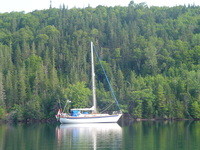
Who: Rick and Bonnie Salsman
Port: Halifax, NS, Canada
Quick Links
- Miscellaneous
- Greece-other
- Croatia and Montenegro 2012
- Sicily 2011-2014
- Italy (Mainland) 2012
- Weather and Technical
- Turkey
- Greece-Aegean
- Syracuse 2009
- Tunisia
- Malta
- Greece Ionian & Gulf of Corinth
- Sicily 2008
- Corsica and Sardinia
- Southern France
- Transatlantic part 2-Azores to Baiona
- Azores 2007
- South Spain & Balearics-2008
- South Spain & Gibraltar 2007
- Portugal 2007
- Atlantic Spain
- Transatlantic part 1-Halifax to Azores
- Previous Trips
- pre departure
- Show All Posts








